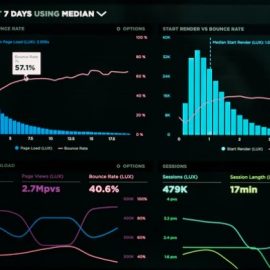

This article is an excerpt from the Shortform book guide to "The Simple Path to Wealth" by JL Collins. Shortform has the world's best summaries and analyses of books you should be reading.
Like this article? Sign up for a free trial here .
What are tax-advantaged accounts? What kind of financial assets should you use a tax-advantaged account for?
Tax-advantaged accounts are tax-deferred or tax-exempt. You should use these accounts, such as IRAs and 401(k)s, for holding tax-inefficient assets (e.g. bond funds that generate taxable interest, actively managed stock funds, CDs, and REITs). They pay interest and non-qualified dividends and produce capital gains distributions.
Below, we’ll take a look at the basic types of tax-advantaged accounts and their key characteristics.
Tax-Advantaged Accounts
In employer-provided investment plans, such as a 401(k), your company hires an investment firm that offers an array of investment options. When you choose an option and contribute, many companies will match your contribution up to a limit. There’s an annual IRS cap on the amount you can contribute, with an additional “catchup” contribution allowed for people 50 and older. If you have more than one plan, the cap is the total you can contribute to all your plans combined.
(Shortform note: The maximum annual contribution to a 401(k) or 403(b) in 2020 is $19,500. The catchup contribution is $6,500 if you’re age 50 or over.)
Collins’s views on these plans are that:
- They’re usually good plans, but the investment companies offering them have larded them with excessive fees.
- You should maximize your contributions and take full advantage of the employer match (it’s free money).
- You should choose an index fund option with a low expense ratio (Shortform note: An expense ratio is an annual fee calculated as a percentage of your investment. For example, if the expense ratio is 1%, you’ll pay $10 a year for every $1,000 invested. Investopedia.com wrote in 2020 that 0.5% to 0.75% is a reasonable expense ratio for an actively managed fund; more than 1.5% would be high.)
- When you leave your job, you should roll your 401(k) into an IRA to retain the tax advantage.
Following are the key aspects of basic plan types.
401(k) and 403(b) Plans
- Your contributions are tax-deductible.
- You’ll owe taxes when you withdraw the money.
- You’ll pay a penalty if you withdraw money before age 59½.
- You have to make RMDs, or required minimum distributions (mandated withdrawals), starting at age 72.
Roth 401(k)
- Your contributions are not tax-deductible.
- The earnings from your investments are tax-exempt.
- Anything you withdraw after age 59½ is tax-exempt.
- You have to make RMDs starting at age 72.
- There isn’t any income limit for participating, as there is for a Roth IRA.
TSPs (Thrift Savings Plans)
TSPs or Thrift Savings Plans are tax-deferred retirement plans similar to a 401(k) for federal employees, including members of the military.
- TSPs offer five basic types of funds; the best option tracks the S&P 500 index.
- You should maximize your contributions to these funds. Don’t roll them over into an IRA, though, to retain the advantage of their extremely low fees.
IRAs
IRAs are tax-advantaged accounts you hold individually—in addition to employer-provided plans like 401(k)s. When choosing your investment company and your investments (as opposed to employer-provided plans), look closely at the fees.
Here’s what you need to know about IRAs:
- You can only contribute earned income or money rolled over from an employer plan to an IRA. Earned income is money you’re paid for your work.
- There are several types of IRAs. Deductible IRAs and Roth IRAs have an income limit, meaning you can’t contribute to them if your income exceeds an annual limit. Non-deductible IRAs have no income limit.
- There’s an annual cap on the amount you can contribute, with a higher cap for those aged 50 and older. (Shortform note: The annual contribution limit for 2020 is $6,000, or $7,000 if you’re 50 or older.) This cap is separate from the contribution limit on your employer-provided plan, but if you have multiple IRAs, the cap is the total you can contribute to all of them combined.
Here are the specifics on the different types of IRAs.
Deductible IRA
- Contributions are income-tax deductible (phased out at higher income levels).
- Taxes are deferred on your earnings but are due when you withdraw money.
- There’s a penalty for early withdrawals.
- Required minimum distributions apply.
Non-Deductible IRA
- Your contributions are not tax-deductible.
- There aren’t any income limits for participation.
- Taxes are deferred on your earnings but are due when you withdraw money.
- You don’t pay any taxes on your original contribution because it was made with “after-tax” money. (Figuring out what you owe can be complicated.)
- There’s a penalty for early withdrawals.
- Required minimum distributions apply.
Roth IRA
- Your contributions are not tax-deductible.
- Your eligibility to contribute is based on your income level. You can’t contribute to a Roth IRA if your income exceeds an annual limit. (Shortform note: The 2020 limit for contributing is $139,000 if you’re single and $206,000 if you’re married and filing jointly.)
- Your earnings are tax-free.
- After age 59½, the money you withdraw is tax-free.
- You can withdraw your original contribution anytime without a tax or penalty.
- You can withdraw contributions that were transfers from a regular IRA without a tax or penalty after five years.
- You can withdraw money for a first-time home purchase or college-related expenses.
- There are no required minimum distributions.
The downside is that you have to contribute “after tax” money, or money you’ve already paid taxes on. For example, if you’re in a 25% tax bracket and want to contribute $5,000, you need $6,250, including $1,250 due in taxes.
Here are Collins’s recommended priorities (in order) for investing your money:
- Make the maximum contribution to your employer-provided 401(k) to take maximum advantage of your employer match.
- Make the maximum contribution to a Roth if your income is low enough that you’re paying little income tax; when your tax rate rises, instead make the maximum contribution to a deductible IRA (leave the Roth alone and let it grow).
- Consider a non-deductible IRA if your income doesn’t qualify for a deductible IRA or Roth IRA.
- Contribute any remaining money to your taxable account.
Required Minimum Distributions
Except for the Roth IRA, all the tax-advantaged accounts discussed have required minimum distributions or RMDs (mandated withdrawals), starting when you turn 72. If you have multiple accounts (excluding Roth IRAs), you’ll have an RMD for each.
The RMD exists so the government can start collecting taxes on the money you saved. If you don’t make the distribution required, the IRS will levy a 50% penalty; if you only withdraw a partial amount, it will take 50% of the shortfall.
An investment company like Vanguard can set up automatic distributions, calculating the correct amount and transferring it to your bank account, taxable account, or money market on the schedule you choose. Online calculators let you enter your numbers and see what you’ll need to withdraw annually when you turn 72.
On the plus side, your nest egg will continue to grow despite these withdrawals as long as the market increases. However, if you have a large nest egg, RMD withdrawals can push you into a higher income tax bracket. Some people start making withdrawals early to reduce their nest egg and thereby avoid being pushed into a higher bracket once they turn 72. You can put the money you withdraw into a Roth or your taxable account, or just spend it.

———End of Preview———
Like what you just read? Read the rest of the world's best book summary and analysis of JL Collins's "The Simple Path to Wealth" at Shortform .
Here's what you'll find in our full The Simple Path to Wealth summary :
- A simple road map to achieving financial independence and a secure retirement
- How to put your money to work for you as your “servant”
- Why you don't need a financial advisor to help you invest






